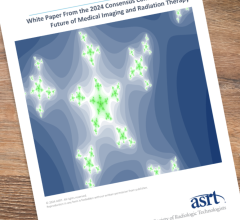
Getty Images
April 4, 2024 — The latest Harvey L. Neiman Health Policy Institute (HPI) study shows that radiologists in radiology-only practices score significantly lower in the Centers for Medicare & Medicaid Services (CMS) Merit-based Incentive Payment System (MIPS) in 2021. The researchers found that radiologists in multispecialty practices score higher, but rarely report any radiology-relevant MIPS quality measures, and instead report measures relevant to other specialties. The findings were published today in the American Journal of Roentgenology.
CMS implemented MIPS to economically incentive providers to deliver quality and cost-efficient care. Payments are adjusted based on performance on reported MIPS measures. “Unfortunately, the upside in MIPS is not equal across specialties. In 2021, there were only 9 available MIPS measures for diagnostic radiology, compared to 65 in family medicine. Our research team wanted to know how such few measures impacted radiologist’s performance in the MIPS program, and if this varied based on the practice type – for example, if the practice was comprised of only radiologists or, on the other end of the spectrum, if the practice was a diverse multi-specialty practice, primarily comprised of other specialties,” explained lead researcher YoonKyung Chung, PhD, Principal Research Scientist at the Neiman HPI.
The researchers used the 2021 CMS Provider Data Catalog to identify radiologists who participated in MIPS, and their affiliated practices. Often a radiologist works in more than one practice. The study included 2,333 practices with 35,578 radiologist-practice pairs. Reported quality measures were from 2021 Quality Payment Program Experience Report data. Reported measures and overall scores for radiologists were compared based on the specialty mix of their practice.
Dr. Chung and team found that radiologists performance in MIPS was heavily influenced by their practice type “In MIPS, a physician can report performance data for any measure applicable to providers in their practice, not solely their own specialty. We looked at the top ten measures reported most frequently by radiologists in each practice type. The results were striking – for radiologists in a multi-specialty practice that wasn’t mostly radiologists, not a single radiology-focused measure was among that list,” said Dr. Chung.
Measures reported most often for radiologists in multi-specialty practices included control of blood pressure and HbA1c (a measure of diabetes control), screening for fall risk, and hospital-wide unplanned readmission rates. None of these measures are in the scope of practice for radiologists. On average, only 1.8% of reported measures by radiologists in diverse multispecialty practices were radiology measures.
Furthermore, radiologists in radiology-focused practices scored significantly lower in MIPS compared with those in practices where other specialties comprised a larger share of physicians. “Our results clearly show that radiologists are at a disadvantage in the MIPS program, with very few available measures, most of which are topped out – meaning that scoring well isn’t possible because average scores are too high.” said coauthor Lauren Nicola, MD, Chief Executive Officer, Triad Radiology Associates and Chair, ACR Commission on Ultrasound. “Our study sends a clear message: the MIPS program in its current design won’t move the needle on quality in radiology. For MIPS to work as intended, physicians must report measures relevant to their specialty, which will require more measures that distinguish quality among radiologists.”
The published paper notes that the only option that exists today to expand options for radiology measures is participation in qualified clinical data registries (QCDRs). Other CMS Quality Payment Program reporting mechanisms – MIPS Value Pathways (MVPs) or reporting through a MIPS alternative payment model entity – currently have no radiology measures.
For more information: https://www.neimanhpi.org/


 July 30, 2024
July 30, 2024 








